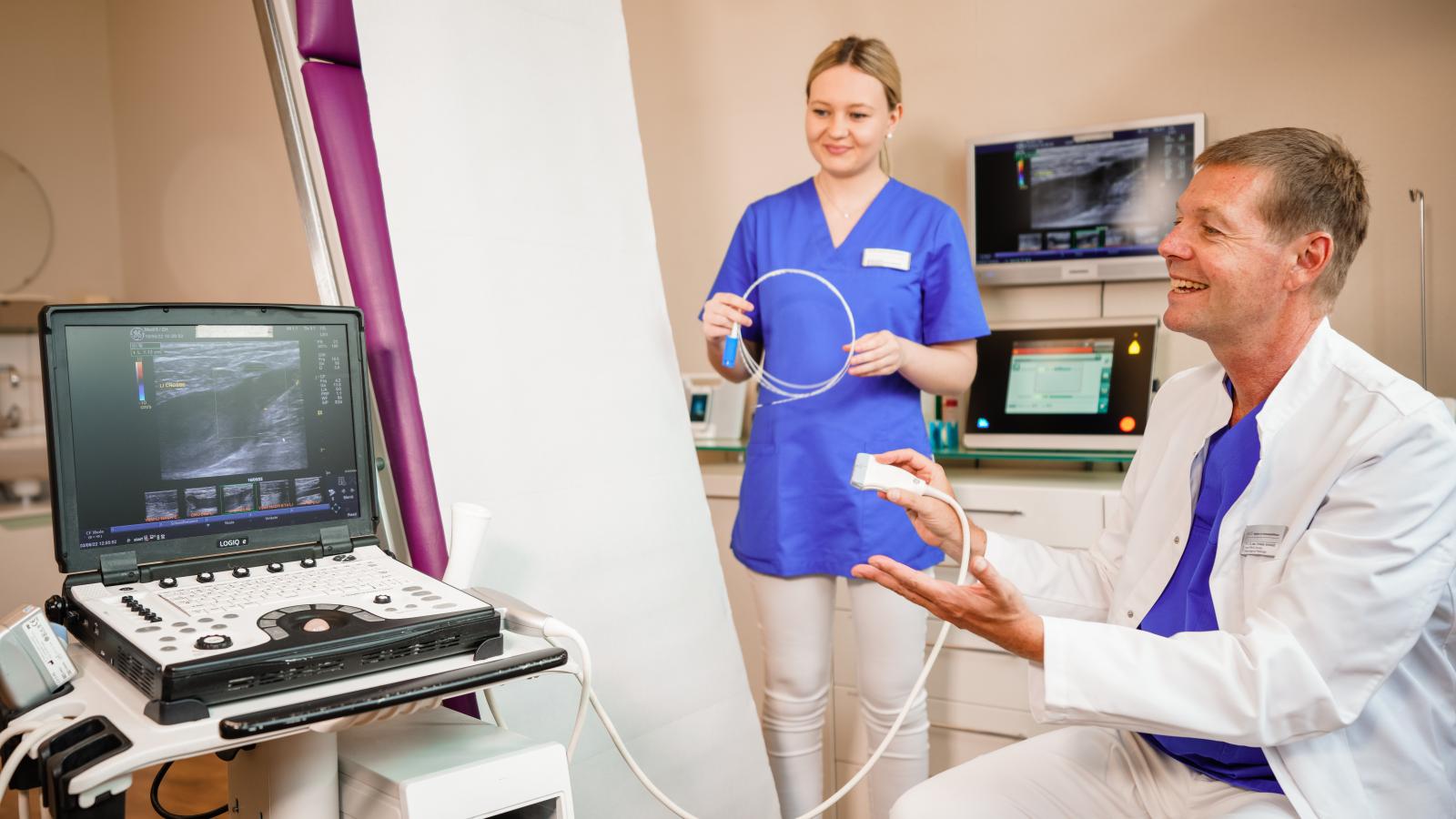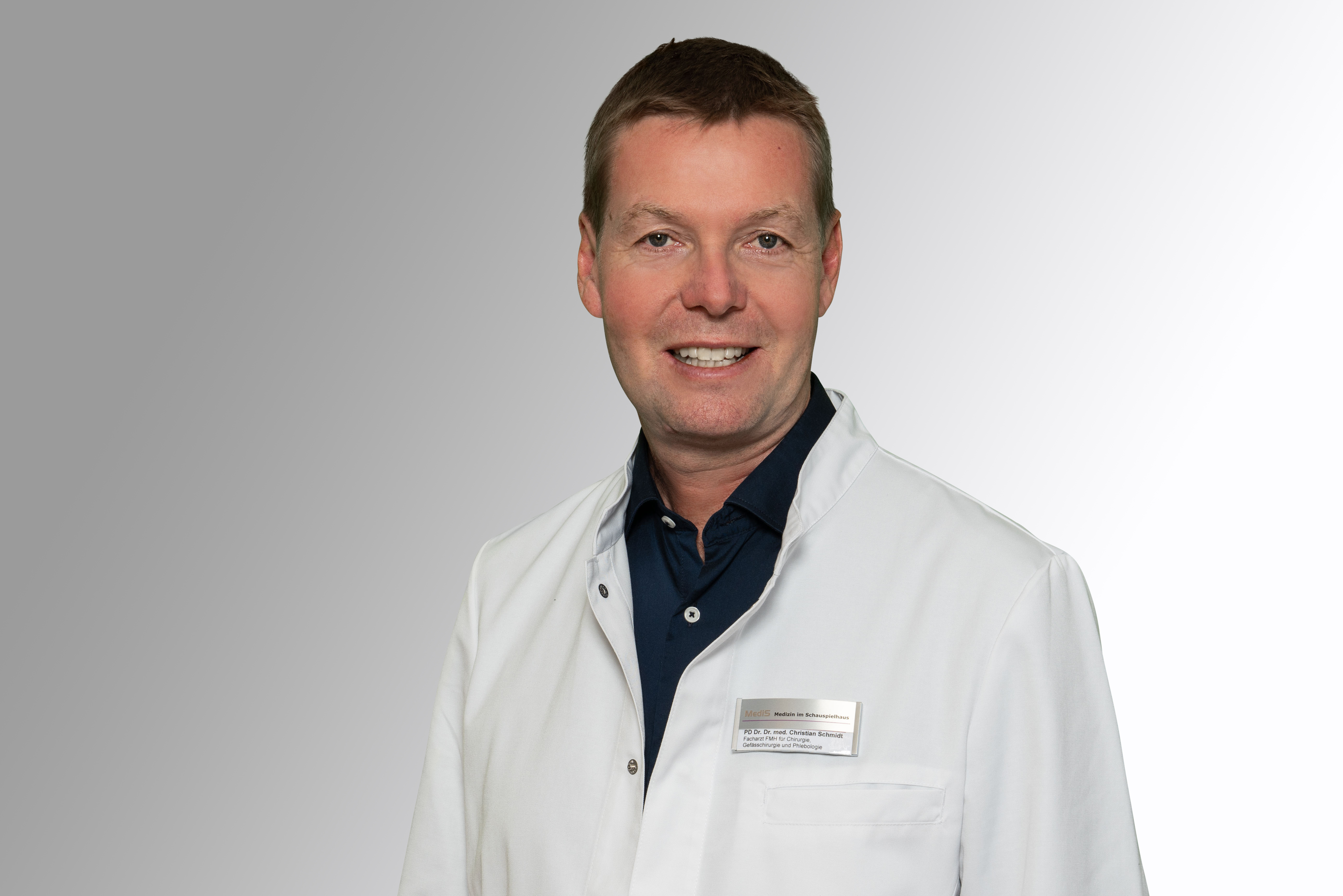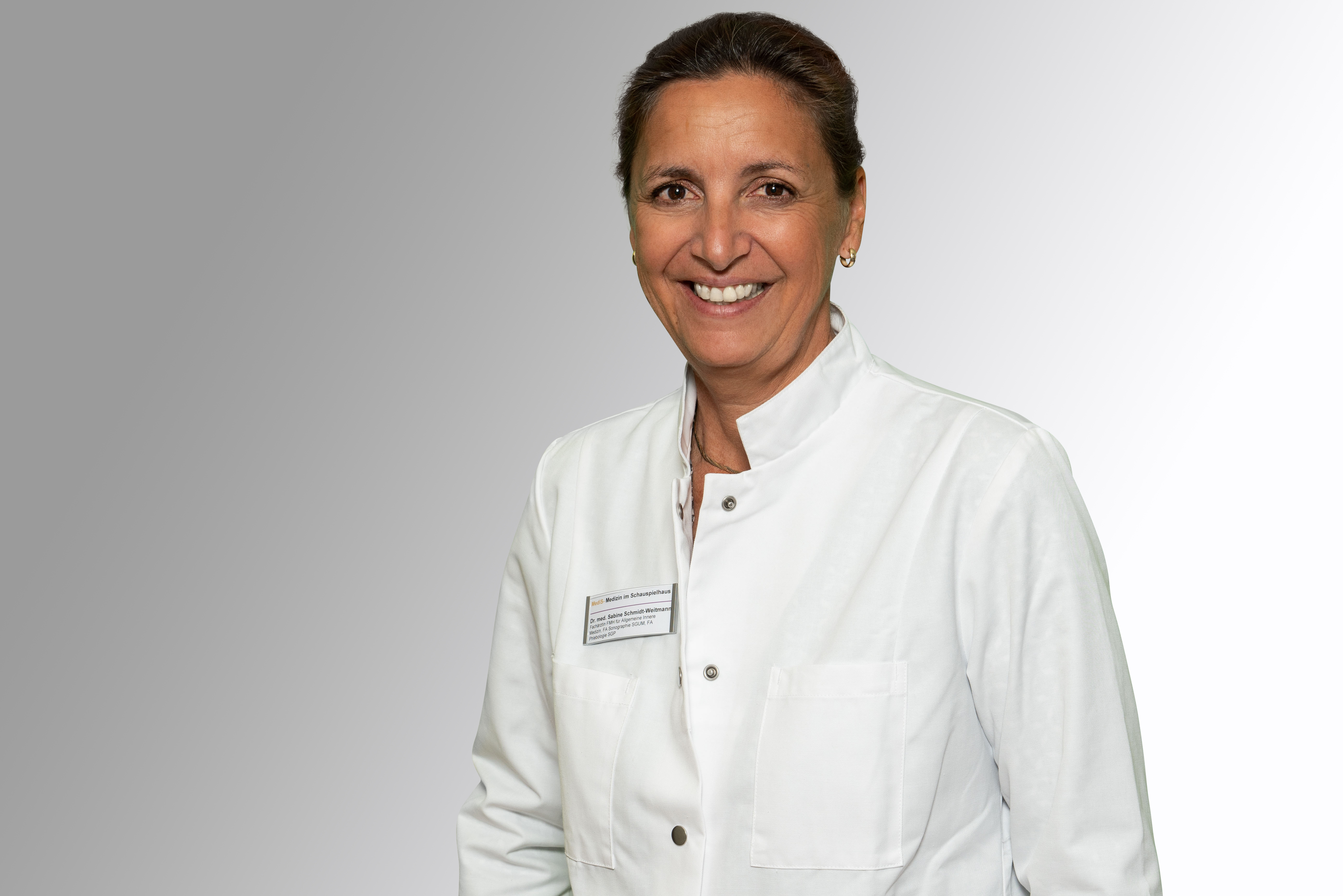Vein Centre im Schauspielhaus
At the Vein Centre im Schauspielhaus, PD Dr Sabine Schmidt-Weitmann and PD Dr Dr Christian Schmidt
welcome you as experienced vein specialists.
Our service provides you with expertise and empathy to achieve the best possible result for your needs. Discover our wide range of services and let our expertise convince you.
You benefit from the extensive experience of our treatment team.
PD Dr. Dr. Christian Schmidt was one of the first in Switzerland to apply this method at the University Hospital Zurich in 2006 and
has more than 30 years of experience in the treatment of varicose veins.
He has published extensively and also authored the MediX Guideline on 'Varicose Veins.'
PD Dr. Sabine Schmidt-Weitmann has been applying minimally invasive therapeutic procedures as a certified phlebologist since 2018 and has treated several hundred patients with this novel innovative technique, achieving high levels of satisfaction.
The costs of these modern endovenous thermal therapies are covered by the swiss basic health insurance since 2016.
Our Promise to You: Veins – We Take Care of It
What brings you to us?
Online Consultation
Do you have questions or a health concern relating to veins? We are happy to help you
with our free online consultation.
Simply send us your questions and concerns using the form below so that our team of specialists can answer them for you.
You can also find frequently asked questions in our FAQ.
Contact
Medizin im Schauspielhaus
Vein Centre im Schauspielhaus
Rämistrasse 34
8001 Zurich, Switzerland
Common diseases
Varicose veins (varices)
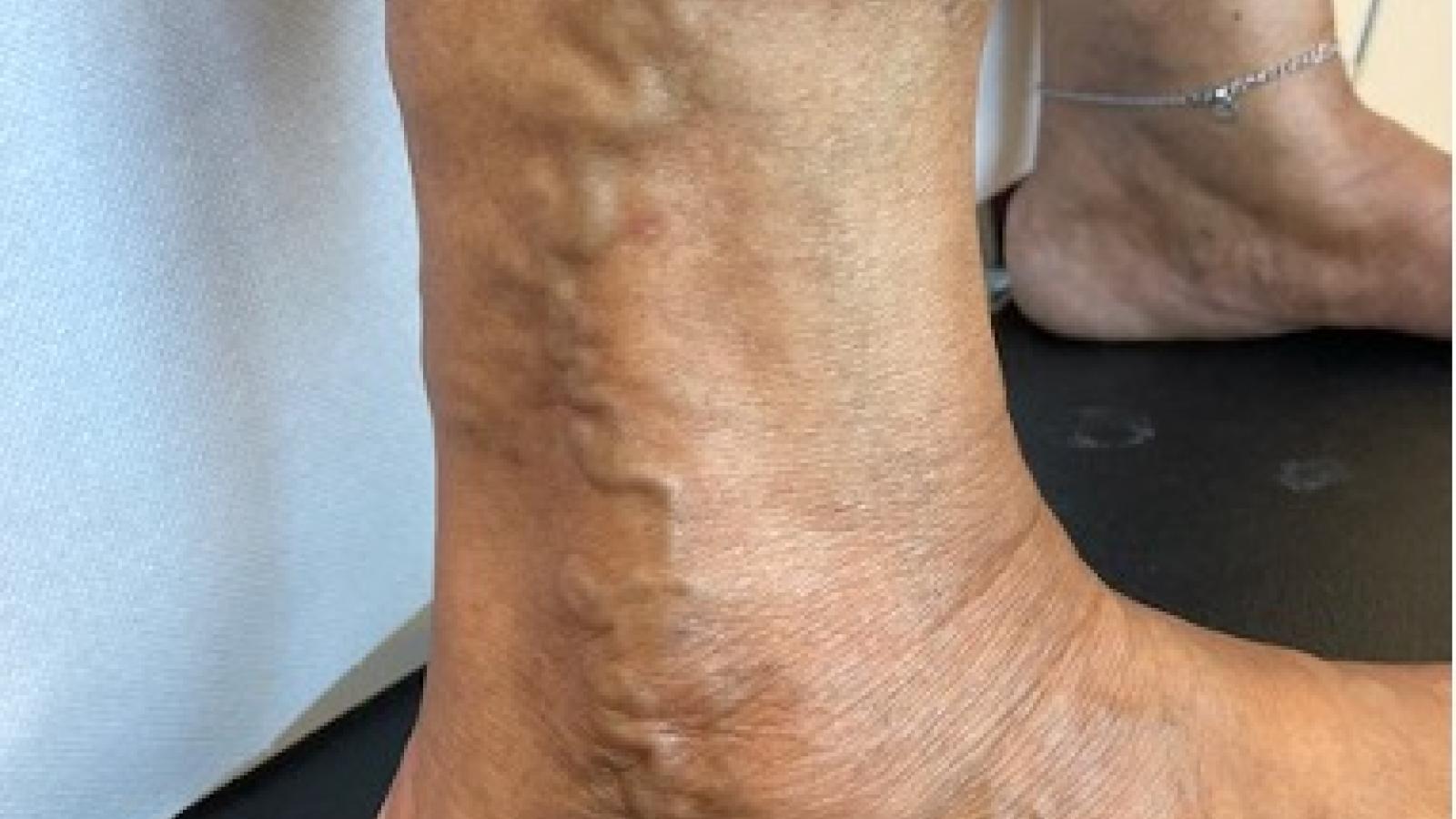
Varicose veins, also known as varices, are enlarged superficial veins often perceived as bluish, swollen, and twisted vessels. They occur due to a weakness in the vein walls, leading to the dilation of veins and failure of the venous valves. As a result, there is a backflow of blood and overload of the venous system. Varicose veins typically appear in the legs but can also occur in other areas of the body.
Over 20% of the population suffer from varicose veins. The most common cause is genetic predisposition. Other contributing factors include pregnancies, prolonged standing or sitting, lack of movement, obesity, and advanced age.
Symptoms include visible, twisted veins, a feeling of heaviness, swelling in the legs, itching, discoloration, and hardening of the skin, which can progress to open sores (ulcer). These complaints often become more pronounced after prolonged standing or sitting and on hot days, but are typically less noticeable early in the morning after waking.
Spider veins
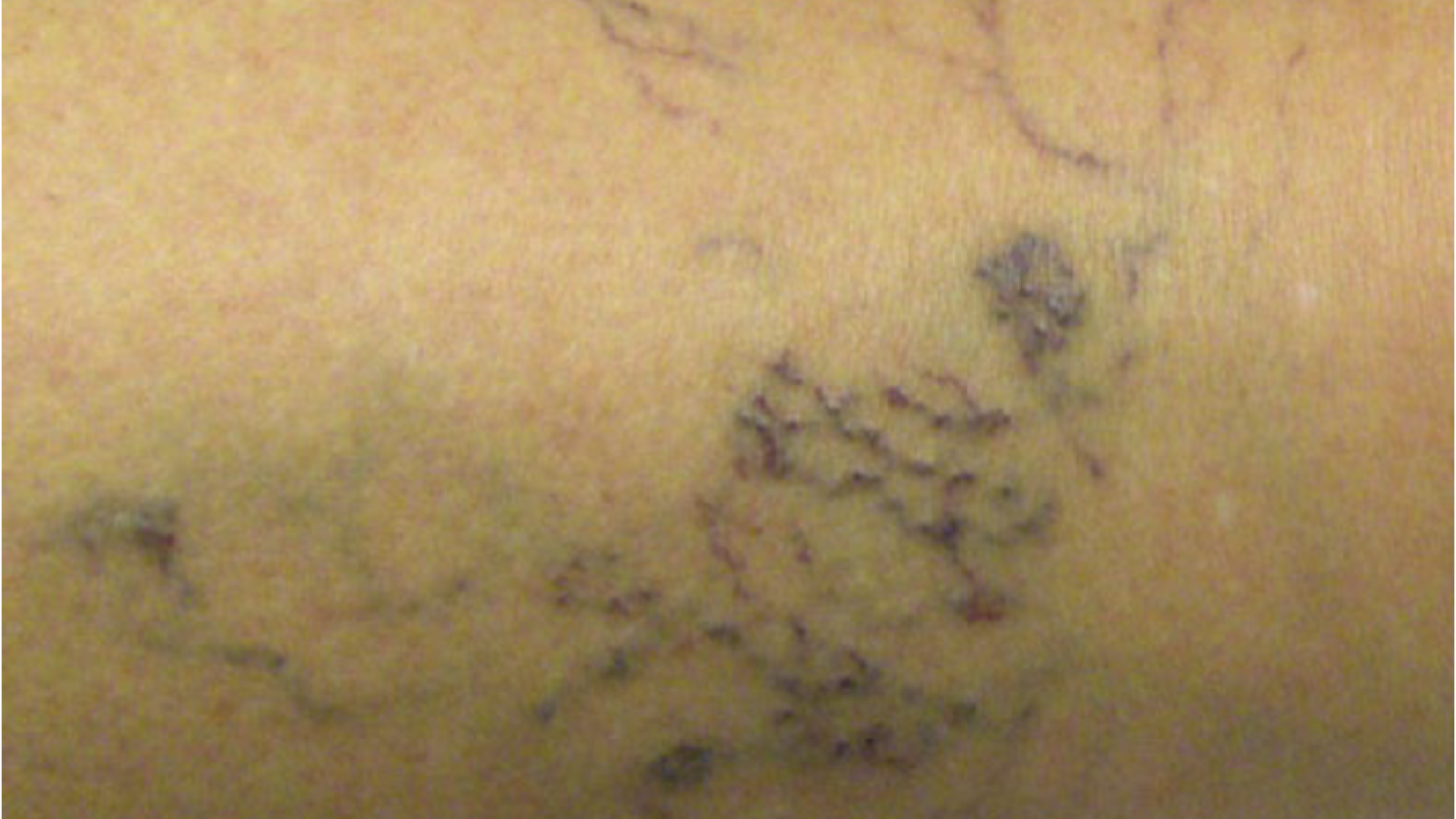
Spider veins are dilated, superficial capillaries located in the skin. They typically measure less than 1mm in diameter and can appear bluish or reddish, often being quite visible. Spider veins usually occur on the legs, frequently even in young individuals, and tend to increase with age.
From a medical perspective, spider veins are usually harmless. However, many people find them bothersome and may seek treatment for aesthetic reasons.
Since spider veins can also be associated with underlying deep vein disorders, a prior examination of the leg veins using duplex ultrasound is recommended. This allows our specialists to accurately assess the function of your venous system and rule out any serious underlying causes for the spider veins.
Thrombosis / embolism
A thrombosis is a blood clot that forms within the blood vessels. This clot can obstruct normal blood flow and lead to serious complications. Thromboses are classified into superficial and deep venous types.
Superficial venous thrombosis typically occurs in the context of varicose veins. When accompanied by inflammation, it is referred to as 'varicophlebitis.' These thromboses are less common but can also occur following accidents, the placement of venous catheters, or as part of underlying medical conditions. Since one-third of superficial venous thromboses are associated with a concurrent deep vein thrombosis, a specialist examination with duplex ultrasound is advisable in every case.
Deep vein thrombosis (DVT) often results from a slowdown in blood flow, which leads to the formation of a blood clot in the deep venous system. Causes can include recent surgery, leg casts, prolonged bed rest (e.g., during a severe flu), or long-distance travel (such as bus or flights longer than four hours).
If left untreated, there is a risk that the clot may dislodge and travel through the bloodstream to the heart and lungs. An embolism occurs when this dislodged clot blocks a blood vessel in the lungs (pulmonary embolism), which can lead to life-threatening situations.
Typical symptoms of venous thrombosis include acute swelling on one side, redness, warmth, and pain in the calf area.
Duplex ultrasound by our specalists is recommended to thoroughly examine the veins and determine whether a thrombosis is present. Additionally, blood tests can be conducted and analyzed directly in our practice.
Phlebitis (inflammation of the veins)
Phlebitis is an inflammatory condition of the veins, often affecting the superficial veins located close to the skin's surface. This condition can be caused by various factors, including injuries, infections, intravenous injections, varicose veins, or prolonged lying or sitting.
Common symptoms include pain, redness, swelling, and warmth along the affected vein. Early examination using duplex ultrasound by our specialists is important to initiate optimal treatment.
Venous Ulcer

The Venous Ulcer, also known as 'leg sore' or 'shin ulcer,' is a chronic wound that typically occurs on the lower leg, particularly around the ankle or shin. The causes can be attributed to either poor arterial blood supply to the leg (such as arteriosclerosis or 'smoker's leg') or, more commonly, venous congestion.
This congestion can result from a previously experienced deep vein thrombosis (known as 'post-thrombotic syndrome') or, most frequently, from long-standing varicose vein disease. The chronically elevated venous pressure leads to skin and tissue damage, ultimately resulting in the Ulcer.
An Ulcer often causes pain, swelling, and can easily become infected. Appropriate treatment by our specialists, aimed at identifying the underlying cause, improving blood circulation, and promoting wound healing, is crucial for wound closure and to prevent further complications."
Chronic lower abdominal pain (pelvic vein congestion syndrome)
The pelvic congestion syndrome (PCS) is a venous insufficiency of the pelvic veins, characterized by blood accumulation in the veins in the pelvic area. This often leads to varicose veins in the intimate region and chronic lower abdominal pain, which may worsen in an upright position, during sexual intercourse, or during menstruation.
The exact causes of PCS are not yet fully understood. However, a higher prevalence has been observed in individuals with genetic predisposition to varicose veins, as well as after multiple pregnancies, childbirth, hormonal changes, and anatomical conditions that affect blood flow in the pelvic veins.
Edema
Edema occurs due to the accumulation of fluid in the tissue and is divided into three different subcategories: lymphatic edema, venous edema, and lipedema. These three types can also occur in combination.
Investigations
- Venous ultrasound (duplex sonography of the veins)
- Light reflection rheography (LRR) of the veins
- MRI phlebography
Therapy
Our treatment of venous disorders (phlebology) is based on an individualised, holistic concept. All diagnostics, treatment and aftercare are personalised to you. Each of the procedures mentioned has advantages and disadvantages, and each patient has their own needs. Our extensive experience with all procedures is the best prerequisite for us to be able to offer you the best therapy for you personally. Our focus is on minimally invasive, endovenous treatment of varicose veins using laser and radiofrequency procedures, which are carried out under local anaesthetic on an outpatient basis in our vein centre.
- Minimally invasive endovenous therapy procedures (e.g. laser therapy)
- Miniphlebectomy
- Foam sclerotherapy
- Microsclerotherapy
- Compression treatment
Frequently asked Questions
Vein problems often raise many questions. To give you an overview of the topic of veins, we have summarised some of the most frequently asked questions in phlebology.
